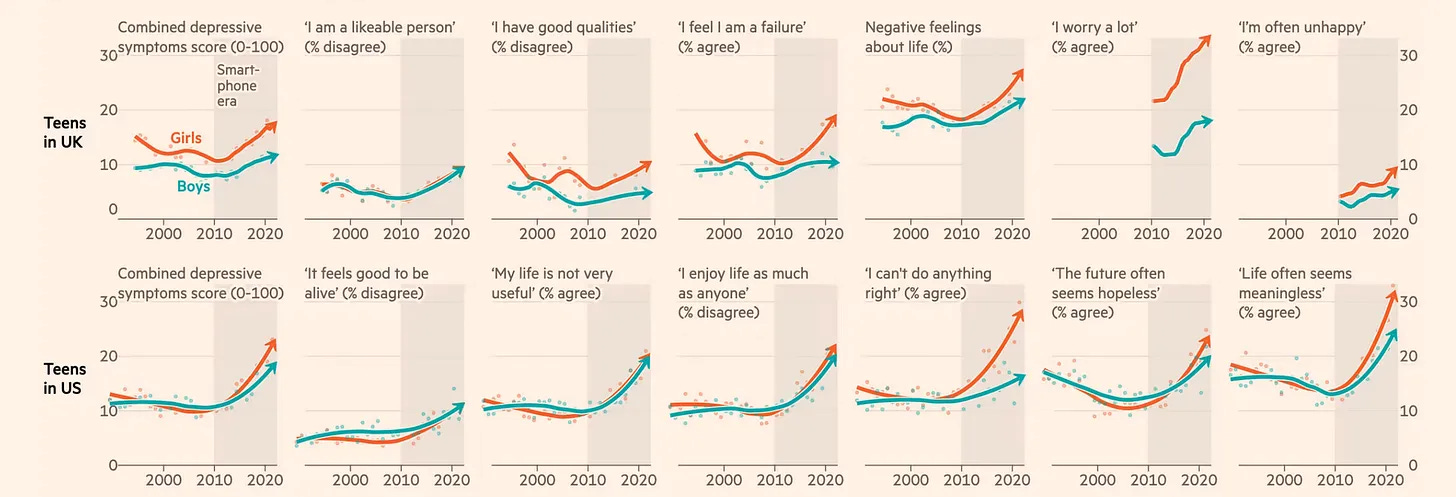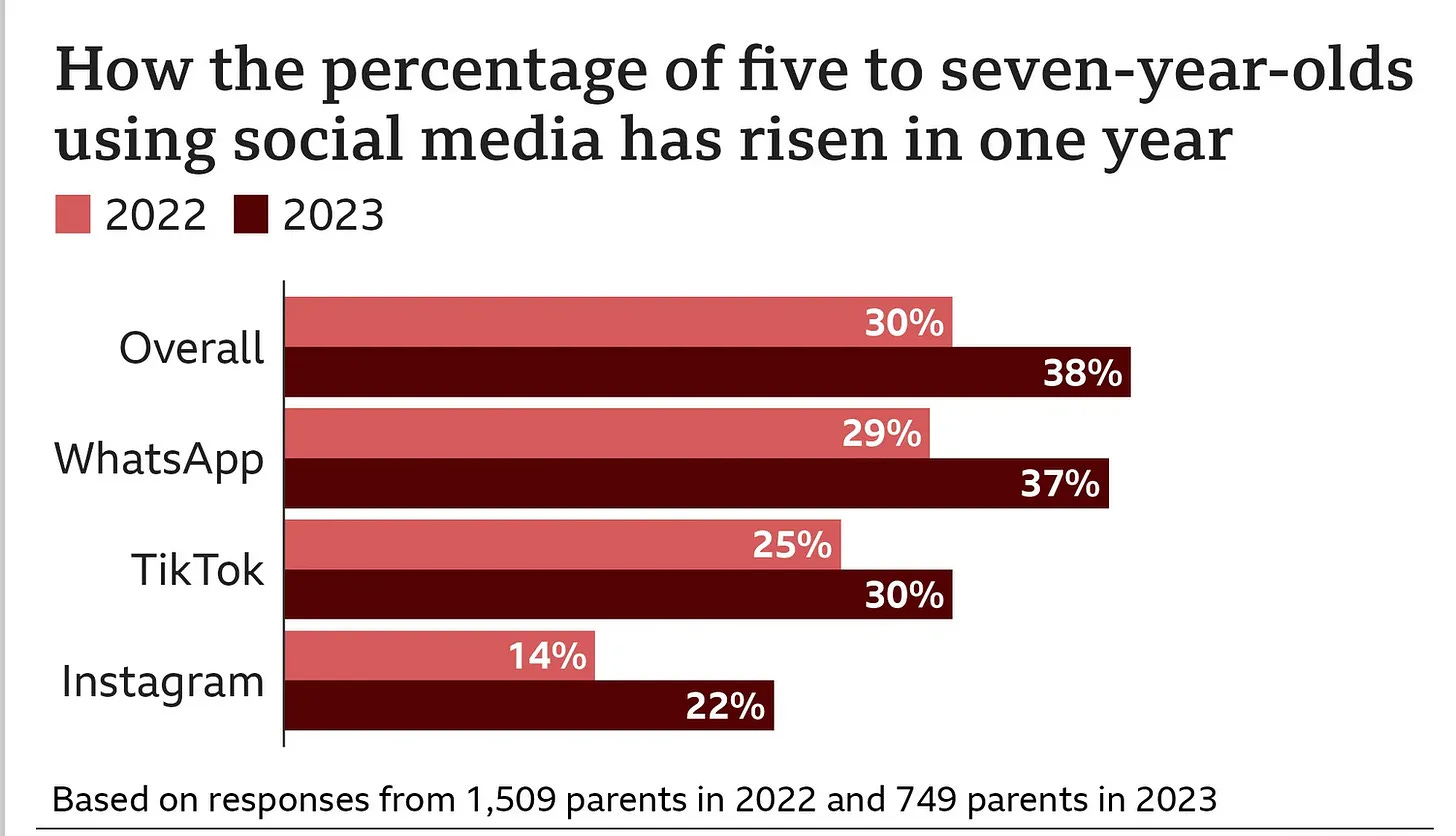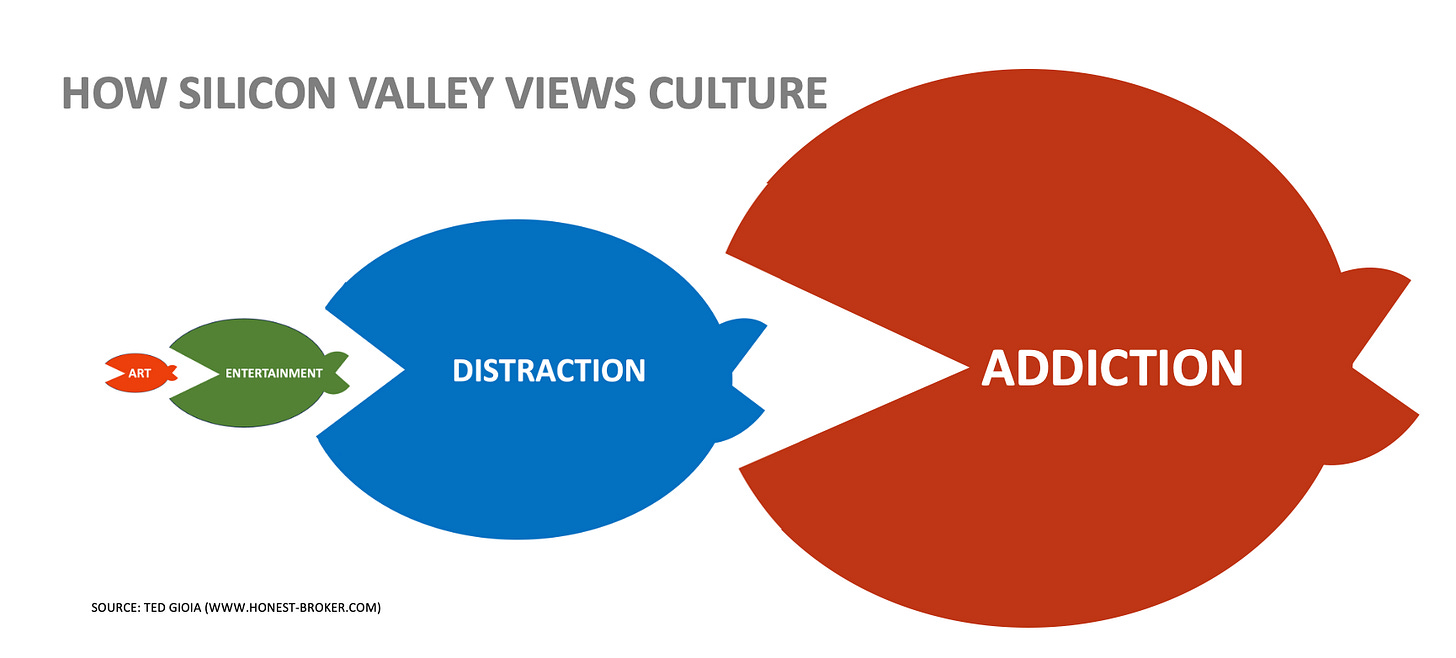Understanding "Modern Addiction”
A quick primer
Addiction has been around since humans met their world, and part of my work is to help people understand that an “addict” is no longer just the huddled figure on the street corner or the mother sneaking drinks before a PTA meeting. More than ever, addiction is pervasive, bordering on ubiquitous—a condition, a mode of living, that touches us all.
The way addiction has tightened its chokehold on modern society is straight-up chilling. We are only just beginning to understand the true scope of our digital dependencies.
I’m not one for dramatics, but I don’t think it’s hyperbolic to say that digital addiction is one of the most pressing issues our species faces. In fact, I’d go so far as to say it’s the issue we need to tackle head-on—because until we do, we’ll be spinning our wheels on everything from climate catastrophes to political bifurcation.
It’s also not hyperbolic to say that the manner in which disinformation has become interlaced with our dopamine-reward systems is downright dystopian.1 This is a root issue. We won’t find satisfying resolutions to our most painful and contentious problems—the ones that cause the loudest outcries—until we decouple dopamine from any type of “information.” When the addictive feedback loop between dopamine and information grows stronger, it takes a greater toll on people’s health and well-being.
The data support this claim, too. If you’ve been tuned into Jonathan Haidt’s latest work, The Anxious Generation, you know the situation is more dire than we could have imagined.2
Look at these mental health trends in our youth since 2010—right about when social media transitioned from a shiny new toy to an all-consuming way of life.
No, seriously, look at them carefully:

Seeing this makes me feel immense pain for the kids who are deprived of the joy and happiness they ought to have. And this already grim situation is only spiraling further out of control. Suicide rates have reached unprecedented levels, with a 62% increase in youth suicide over the past ten years.
But instead of unplugging, our kids are doubling down and spending more, not less, time glued to their screens.
A staggering 30% of children between the tender ages of 5 and 7 are already on that mind-numbing rabbit hole called TikTok!

The imminent “ban” on TikTok, which thankfully passed with bipartisan support in the US, offers a glimmer of hope. However, even if such a “ban” proves worthy of its name (as the exact details remain indeterminate), TikTok is merely one head of the many-headed Hydra (monster).
To grasp the cancerous impact of digital addiction, I cannot recommend Ted Gioia’s essay below highly enough. His insights are so compelling that I will be borrowing some of his infographics throughout this essay.
Gioia pulls no punches in exposing how the sacred arts have been steamrolled and absorbed into soulless entertainment, which is itself being swallowed whole by a ravenous culture of distraction.
The sobering reality?
Those bite-sized 60-second reels are now dictating the rhythm of our media consumption, leaving us constantly parched for the next empty caloric hit.
Simply put, if a smartphone is seldom out of your reach, or if you consume any form of streaming media, you have now unwittingly exposed yourself to the addictive cycle that keeps us unconsciously descending into a fog of numbness, desperately chasing one empty distraction after another.
In other words, if you’re reading this, you likely find yourself somewhere on what I describe as the modern addiction spectrum.
And we haven’t yet touched on the persistent and damaging impacts of more “classic” drugs, be it Oxy, ostensibly innocuous alcoholic seltzer waters, deceptively potent bio-engineered cannabis varieties, Adderall, e-vapes, and so on.
Addiction, in all its myriad forms, has become a defining feature of our contemporary existence. As much as I wish I weren’t the guy who continually beats this drum, it’s a troubling reality that weighs heavily on my mind.
For several years now, I’ve been writing about what I call “Modern Addiction” without clearly articulating what it means. I was developing a book concept on it for some time, until last year when I realized that it would work better as a course, at least for now.
This process of reworking my material into a curriculum has been immensely helpful in clarifying my thinking. My hope is that by enhancing our understanding of “Modern Addiction,” we can better grasp the reasons behind this epidemic, thereby improving our chances of achieving what I term “Awakened Recovery.”
Because, as my friend Holly Whitaker aptly states, if addiction touches all of us, then it follows that we all deserve recovery!
Acknowledging your place on the addiction spectrum doesn’t necessarily mean you’re an “addict” or that you need to enroll in a program. It simply means that you, too, can experience the profound, life-altering benefits that come from adopting a recovery mindset—a mindset that emphasizes conscious, intentional, ethical, and communal living as the path to a more meaningful and connected existence.3
This is a collective issue, not an individual one.
And the crucial first step is recognizing that your addiction has inherent intelligence—it fulfills a strategic function. Once you understand that function, you can start making progress by aligning that intelligence to serve rather than enslave you.
Here are my current working definitions of “Modern Addiction” and “Awakened Recovery.”
I’d love you to hear your thoughts and any suggested improvements.4
Modern Addiction:
Modern Addiction is a spectrum that nearly *everyone* in contemporary society finds themselves on, ranging from mild to life-threatening. It encompasses dependencies not just to substances like drugs and alcohol, but also to behaviors and processes like social media, pornography, gambling, shopping, food, work, and technology. Modern Addiction is fueled by a societal “set and setting” that predisposes everyone to addictive patterns through the incessant pull of consumerism, instant gratification, and dopamine-driven feedback loops.
Although appearing harmful, these addictive patterns frequently function as an intelligent, protective mechanism to shield people from confronting painful emotions and unresolved psychological wounds. Nevertheless, when left unaddressed, Modern Addiction inevitably leads to an unconscious “reciprocal narrowing” of perspective and sources of fulfillment, trapping individuals in a vicious cycle of seeking external solutions for internal discomfort.
Awakened Recovery:
Awakened Recovery is a holistic, integrative approach to overcoming Modern Addiction. It engages all dimensions of the self—body, heart, mind, and soul. Rather than just focusing on abstinence, it aims for inner transformation and liberation. Awakened Recovery involves simple behavior changes, rekindling presence and connection to the body through somatic inquiry and nervous system regulation, opening the heart and learning to process emotions in healthy ways, expanding the mind and meta-cognitive awareness through practices like meditation and parts work, and recovering one’s soul by exploring spirituality, individuation, and communal service. It harnesses the underlying energy and intelligence beneath addiction and redirects it toward more constructive, nourishing pursuits.
Awakened Recovery is the daily practice of “reciprocal opening”—a progressive expansion of perspective and sources of fulfillment, leading one back to their inherent wholeness. By consistently engaging in an ecology of recovery practices, individuals gradually rewire their neural pathways, cultivating resilience and the capacity to navigate modern existence with grace and relative ease. Ultimately, Awakened Recovery is the path of spiritual awakening, a coming home to one's timeless, eternal Self.
Now that we’ve defined the problem and the solution, all that remains is the work.
But never forget—it’s doable, worthy, and oh-so-rewarding.
I define disinformation as the deliberate spread of exaggerated, misleading, or manipulated content, often in the form of propaganda, with the intent to influence public opinion, or advance a particular ideological agenda. These days, one is hard-pressed to find a distinction between “disinformation” and “information.”
There are those who question Haidt’s research methods, but I believe it naïve to question his conclusions—and that history will inevitably, and resoundingly, validate his theses. Not to mention that his takeaways and recommendations are grounded in simple common sense.
It’s also a mindset that recognizes that screens are literal drugs and thus should be approached in a harm-reduction manner.
I’m especially curious to hear whether “Awakened” Recovery resonates with you. After much deliberation—questioning whether it might be too “woo”—I’ve come to the conclusion that the spiritual nature of this problem and its solution is simply too crucial to overlook.





So far, the articles I’ve read refuting Haidt’s research and claims have been empty of substance and logic. Haidt has presented such a clear and rational argument that I don't see how anybody could deny the role smartphones and social media have played in adolescents’ mental illness. I’ve shown my daughter many illustrations from his recent book to start conversations with her, which inevitably leads to discussing addiction, something she knows I have experience with, though not to what extent or its severity.
This is such an important topic, and I’m glad you’re writing about it. More people need to acknowledge the depth and hold of addiction and its many forms in today’s society.
Thank you, Alex.
Love the piece and the way you pair Awakened with Recovery. That’s how I have defined my recovery. Awakening to self-knowledge.
Good one Alex. Important for everyone to read and absorb.